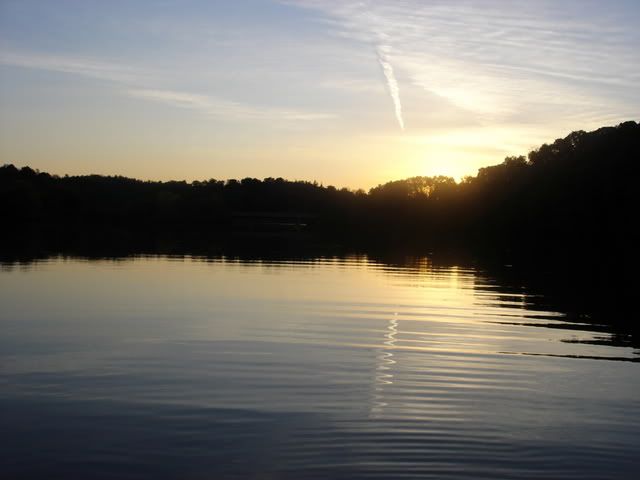Post by zig on Aug 29, 2007 12:13:23 GMT -4
Sorry I missed a few PM's - didn't mean to ignore them.
A popular question has been what we are doing for the white perch on Marburg? Figured everyone could benefit from the info, so here it goes:
We use a trolling approach to cover as much water as possible when targetting these fish.
For two anglers, I'll run two(2) rods out out the sides from the bow: (pardon the text - it's from an older post)
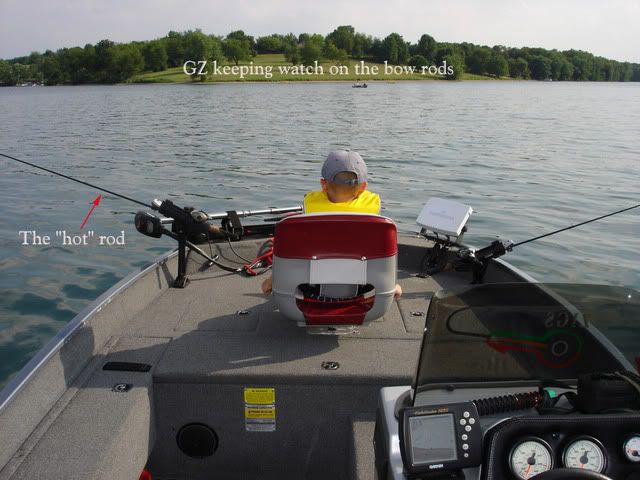
Two(2) additional rods will be run straight back off the stern.
We pull blades, as I call it - they are commonly known as in-line spinner harnesses -or- worm harnesses:
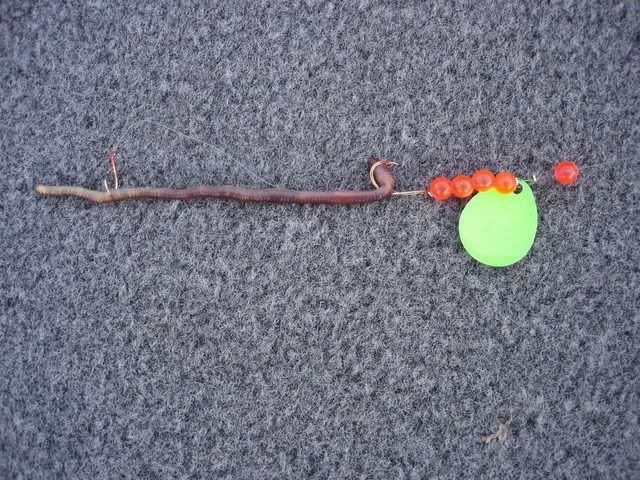
That picture is somewhat misleading. The worm is actually a redworm - much smaller then the 'nightcrawler' size it appears to be.
Blade and bead colors can be whatever you feel most confident with - we will run orange, white, chart. green, chart. yellow, gold, silver, blue, red along with many combinations of bead colors until a pattern gets established. At Marburg, there is a preference for silver, chart. green, or orange. Cloud cover and wind seem to be the defining elements that dictate what works best.
These are tied onto leaders ranging in length from 24 - 52" - here again depending on how active the fish are. During active bites a 24" line works, but if they're neutral to negative you'll have to start running longer lines.
This is what they are doing in the water:
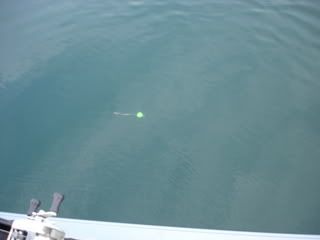
These lengths are all measured from the swivel that stops the egg sinker. Sinker weight varies from 1/8oz. to 1oz. depending on the depth and speed.
I'm a detail junky, so all the rods are outfitted with line counters. This is a whole topic in itself about controlled depth trolling, but for now - I'll run 35-75ft. of line from the rod tip to cover four(4) different depths.
We've had the best hook-up ratios running no slower then .3mph, and not faster then 1.7mph. Seems .2 will go unnoticed, and 2.0mph is just too fast for them to give chase.
Normally, the majority of the fish will be over 20-30ft. of water, but we've caught them in 8 ft. and over 75ft. They are really everywhere in isolated schools.
We've done best with trophy class fish (two state record breakers so far) on the main body of the lake. The arms all hold plenty of fish, but we haven't been able to hook-up with many decent fish in them. (Wildasen, Marburg, or Black Rock flat arms)
You'll pick up 'gills, and the occasional bass or walleye using this technique as well. (We're usually good for at least one walleye per trip)
Summing it up: Start trolling spinners w/worms as soon as you leave the launch. Run a fair amount of line out, and pay attention to what gets hit first.
Hope this helps someone.
My favorite part of white perch fishing:
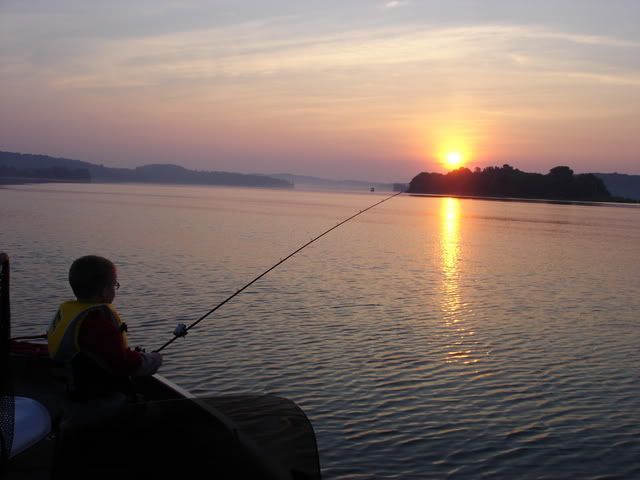
A popular question has been what we are doing for the white perch on Marburg? Figured everyone could benefit from the info, so here it goes:
We use a trolling approach to cover as much water as possible when targetting these fish.
For two anglers, I'll run two(2) rods out out the sides from the bow: (pardon the text - it's from an older post)

Two(2) additional rods will be run straight back off the stern.
We pull blades, as I call it - they are commonly known as in-line spinner harnesses -or- worm harnesses:

That picture is somewhat misleading. The worm is actually a redworm - much smaller then the 'nightcrawler' size it appears to be.
Blade and bead colors can be whatever you feel most confident with - we will run orange, white, chart. green, chart. yellow, gold, silver, blue, red along with many combinations of bead colors until a pattern gets established. At Marburg, there is a preference for silver, chart. green, or orange. Cloud cover and wind seem to be the defining elements that dictate what works best.
These are tied onto leaders ranging in length from 24 - 52" - here again depending on how active the fish are. During active bites a 24" line works, but if they're neutral to negative you'll have to start running longer lines.
This is what they are doing in the water:

These lengths are all measured from the swivel that stops the egg sinker. Sinker weight varies from 1/8oz. to 1oz. depending on the depth and speed.
I'm a detail junky, so all the rods are outfitted with line counters. This is a whole topic in itself about controlled depth trolling, but for now - I'll run 35-75ft. of line from the rod tip to cover four(4) different depths.
We've had the best hook-up ratios running no slower then .3mph, and not faster then 1.7mph. Seems .2 will go unnoticed, and 2.0mph is just too fast for them to give chase.
Normally, the majority of the fish will be over 20-30ft. of water, but we've caught them in 8 ft. and over 75ft. They are really everywhere in isolated schools.
We've done best with trophy class fish (two state record breakers so far) on the main body of the lake. The arms all hold plenty of fish, but we haven't been able to hook-up with many decent fish in them. (Wildasen, Marburg, or Black Rock flat arms)
You'll pick up 'gills, and the occasional bass or walleye using this technique as well. (We're usually good for at least one walleye per trip)
Summing it up: Start trolling spinners w/worms as soon as you leave the launch. Run a fair amount of line out, and pay attention to what gets hit first.
Hope this helps someone.
My favorite part of white perch fishing:


